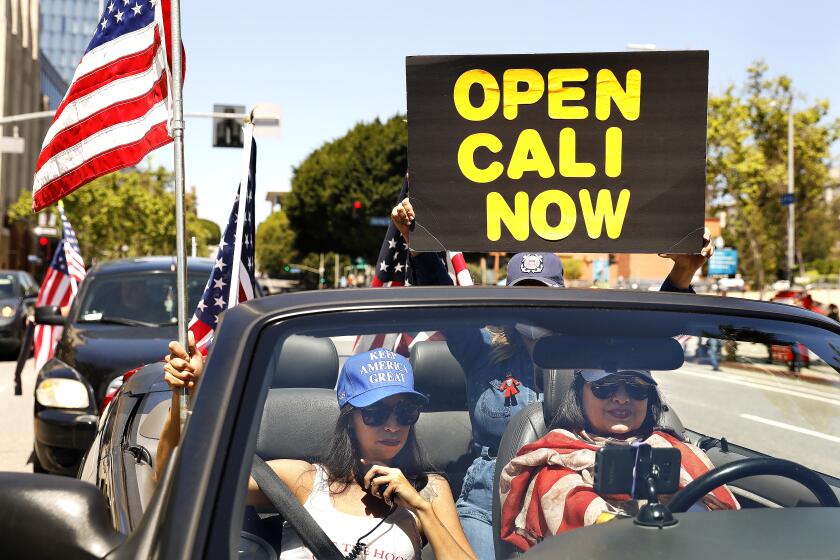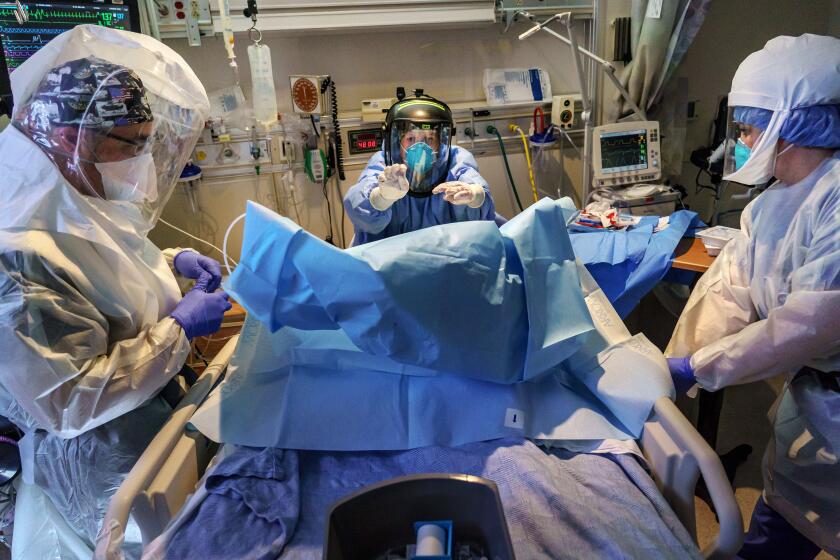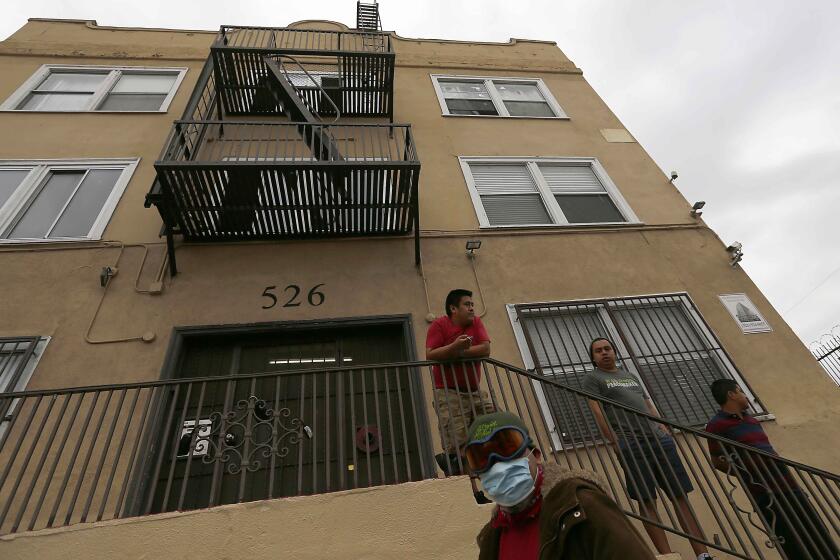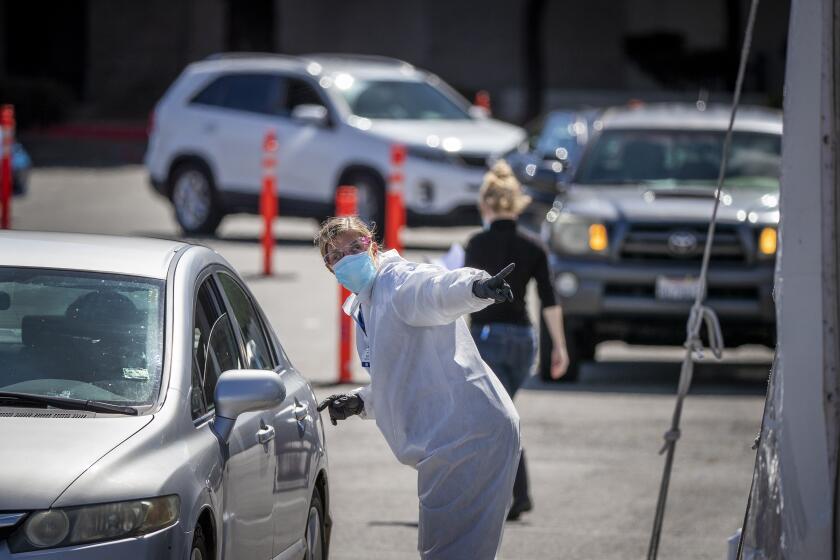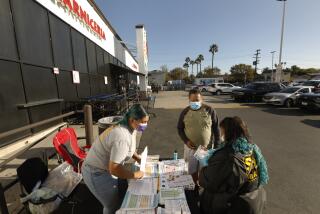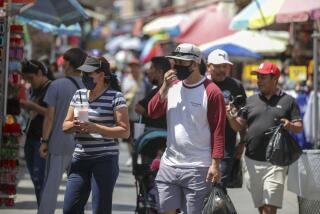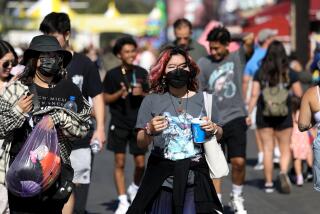A troubling trend: Coronavirus-related deaths doubled in L.A. County over last week
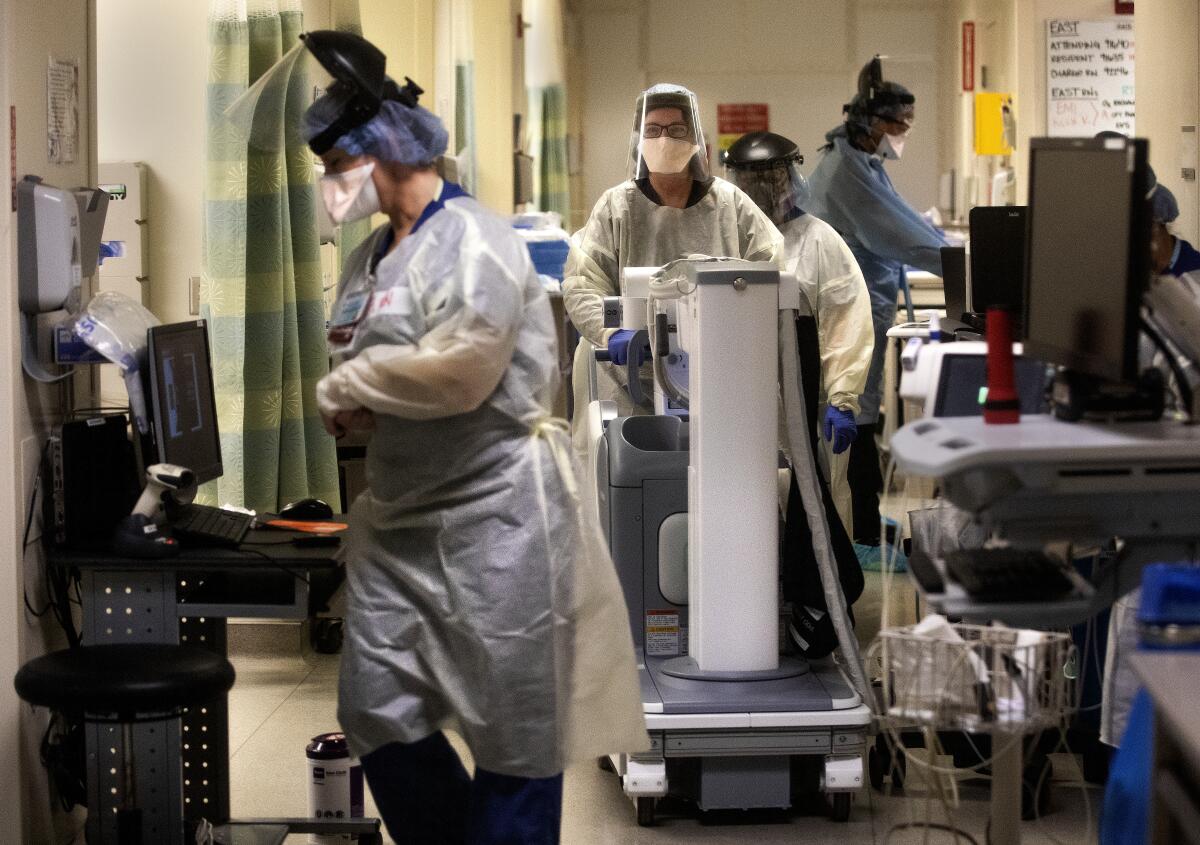
The number of coronavirus deaths in Los Angeles County doubled in the last week amid new evidence that the poor are being hardest hit, according to the county health department.
As of Sunday, the county had recorded 916 deaths and nearly 20,000 confirmed cases of COVID-19.
Officials said the rising numbers underscore the need to stay indoors as much as possible and also raise questions about when Los Angeles County will be able to ease its strict social distancing rules.
“Because we are still seeing a significant increase in new cases and deaths, we ask that you continue to stay home as much as possible,” Barbara Ferrer, the county’s public health director, said over the weekend.
In years past, the county and city have struggled to effectively communicate with the public during emergencies. This time, they’re focusing on a consistent message.
Troubling trends
After appearing to level off for a time, the number of COVID-19 cases reported in Los Angeles County rose at a rapid clip over the past week.
Some of that is because of increased testing, as well as the clearing of a backlog of pending test results, officials said.
Nursing homes alone account for 40% of coronavirus deaths in the county, and there have been new efforts to increase testing and health regulations at the facilities. The California National Guard is now assisting with staffing at some homes.
The county issued an order that expands testing to both symptomatic and asymptomatic staff and residents, bans visitors, suspends communal dining and requires staff and residents alike to wear protective equipment. The moves are designed to get a better sense of how many people inside the homes have contracted the novel coronavirus and to limit access to outsiders who could either bring in the virus or acquire it themselves.
Photos show increased patient volume at Baja California-adjacent Scripps Mercy Hospital Chula Vista.
Nearly half of the state’s nursing home patients are being treated in Los Angeles County, home to a quarter of the state’s population.
L.A. County has seen only a fraction of the deaths of New York City. But it’s become California’s coronavirus epicenter:
Los Angeles 916 deaths
Riverside 118
San Diego 111
Santa Clara 100
San Bernardino 82
California’s push for density, supporting policies to encourage using transit and building housing near job centers, has a new enemy: the coronavirus.
The hardest-hit
Overall, black people continue to be among the highest COVID-19 fatalities in L.A. County, with 13 deaths per 100,000 people, compared with 9.5 for Latinos, 7.5 for Asians and 5.5 for whites, public health officials said.
Officials also revealed that those who live in lower-income communities in L.A. County are three times more likely to die of COVID-19 than those in wealthier communities. Neighborhoods where 30% to 100% of the residents live in poverty have seen about 16.5 deaths per 100,000 people, compared with 5.3 deaths per 100,000 in communities where less than 10% of residents live in poverty, they said.
“As we have more information about who is dying, we are reminded that the work ahead requires that we address issues of disproportionately that result in higher rates of death among African Americans, Latinx and Asians as well as residents living in poverty,” Ferrer said. “Ensuring access to testing, early treatment and care, and economic support among those communities at higher risk of devastating outcomes associated with COVID-19 is essential.”
The numbers mirror a Times statewide analysis: Black and Latino Californians ages 18 to 64 are dying more frequently of COVID-19 than their white and Asian counterparts relative to their share of the population.
When accounting for each group’s percentage of the population, blacks and Latinos under the age of 65 had a higher share of fatalities than even older blacks and Latinos. The trend is particularly noticeable among those ages 18 to 49, The Times analysis found.
Hundreds of thousands of L.A. County residents may have been infected with the coronavirus by early April, outpacing total of known cases, report says.
The future
Los Angeles County’s Safer at Home order is in effect through at least May 15. It remains unclear whether it will be extended or eased.
The county has kept its beaches closed, while Orange and Ventura opened their shorelines.
Last week, health officials offered slightly rosier projections about the trajectory of the virus in L.A. County but cautioned that the improved outlook was contingent on residents’ continuing to practice physical distancing.
While COVID-19 cases are not yet decreasing here, there are signs its leveling out. County officials are developing a plan to slowly ease stay-at-home orders, but four key benchmarks must first be met.
“We don’t want to undo all the good we’ve done and accomplished so far,” County Supervisor Kathryn Barger said Friday. “We are not yet on the other side of this pandemic, and we don’t want to prematurely ease restrictions.”
She said the county will first need to make sure that its hospitals are adequately staffed, have enough resources to perform testing and a sufficient number of ventilators and other medical supplies to handle routine care as well as possible influxes of COVID-19 patients.
Second, the county must ensure that protections are in place for the most vulnerable, including the elderly, homeless people and those who live in institutional settings or don’t have access to health services.
Third, the county must have the capacity to test, isolate and quarantine all those who are ill, as well as to conduct surveillance to prevent further spread.
And fourth, the county must maintain physical distancing and infection control measures, including by providing businesses with educational materials and guidance to ensure that the rules can be followed when they reopen.
Gov. Gavin Newsom said last week that, while California is making progress in bending the coronavirus curve, most of the six conditions he set for the state to consider loosening the stay-at-home order he issued last month have not been met. The only change the governor has made is to allow hospitals to begin scheduling some elective surgeries, citing sufficient capacity.
The six goals are the ability to closely monitor and track potential cases; prevent infection of high-risk people; prepare hospitals to handle surges; develop therapies to meet demand; ensure schools, businesses and child-care facilities can support social distancing; and develop guidelines for asking Californians to stay home again if necessary.
“We will consider local conditions” when deciding when to ease the rules Newsom said Friday. “We will consider those things not only from the perspective of the spread of the virus, not only from the perspective of the number of deaths and trend lines, but also in terms of our broader capacity.”
More to Read
Sign up for Essential California
The most important California stories and recommendations in your inbox every morning.
You may occasionally receive promotional content from the Los Angeles Times.
